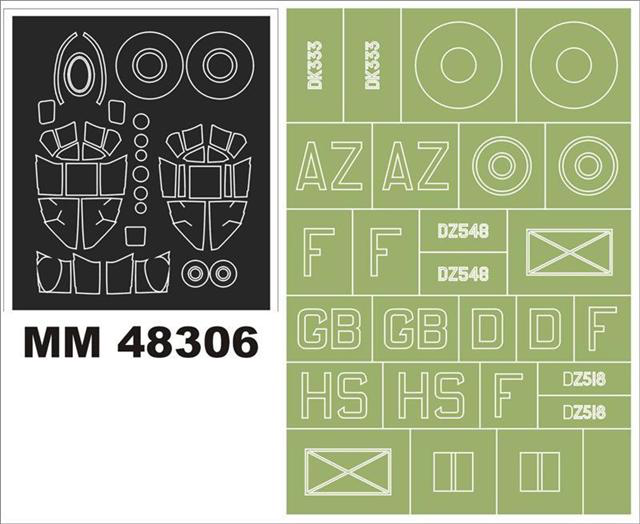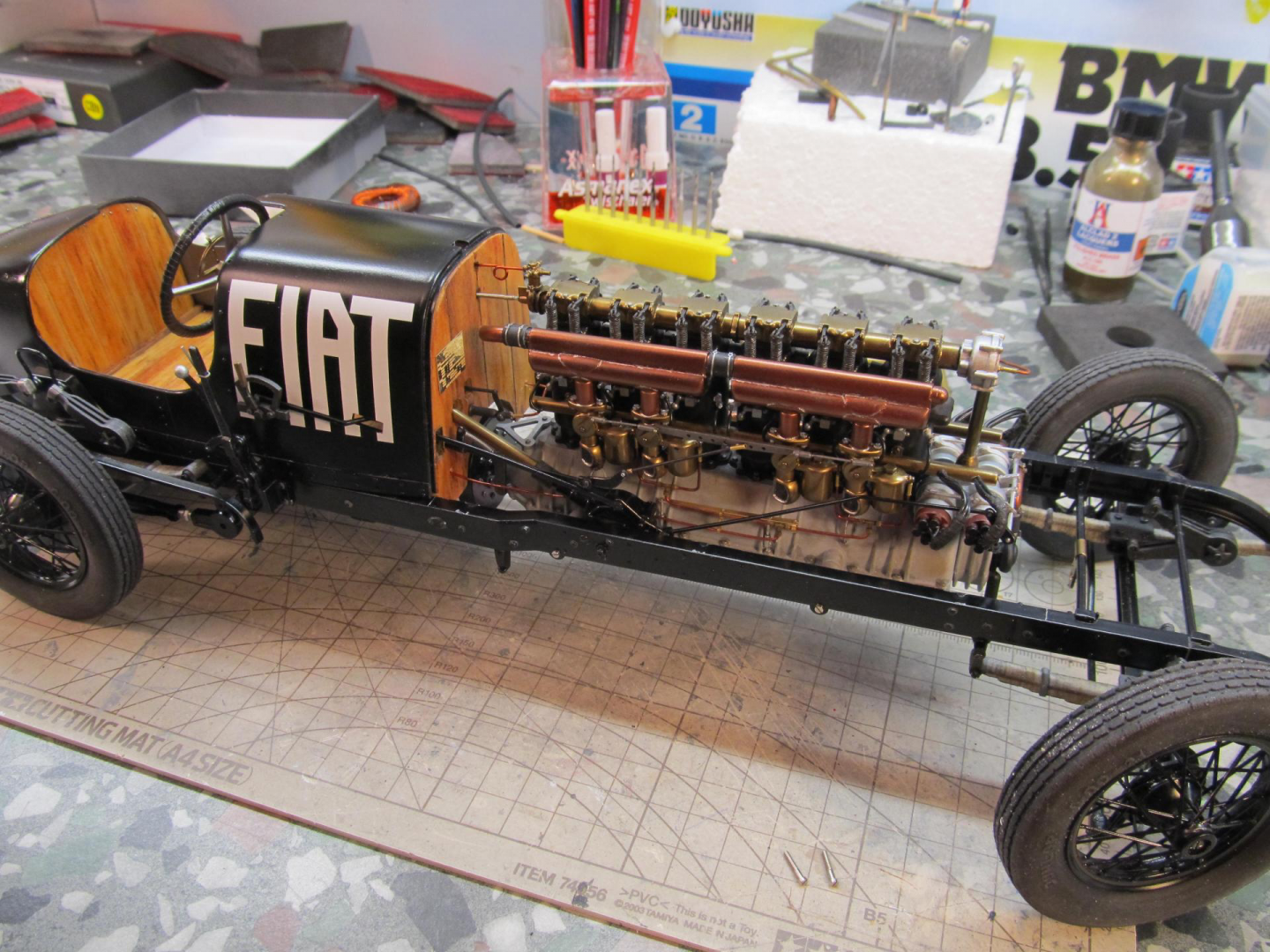-
Posts
4,514 -
Joined
-
Last visited
Content Type
Profiles
Forums
Gallery
Events
Everything posted by Landlubber Mike
-

Italari 1/12 Mephistopheles by kpnuts
Landlubber Mike replied to kpnuts's topic in Non-ship/categorised builds
Wow fantastic build! You work quick! If and when I ever get to mine, I'm sure it will take me a a year to complete - with results likely no where close to yours! -
Very nicely done Mark! Can I ask on the application of the plates - how to you apply the glue so that it doesn't squeeze out from underneath when the plate is attached? Seems like a tricky exercise of putting enough glue that the ends of the plate are secured, but not too much that excess squeezes out. You've certainly mastered it!
-

B-25 Mitchell "Meet Miss Runyon" by Javlin-HK-1/32
Landlubber Mike replied to Javlin's topic in Non-ship/categorised builds
Nice! Looking forward to that one! -
I do as well - pain to try to sand it so I wipe up as much as possible. It's taught me to be a little more careful with how much glue I add.
-

B-25 Mitchell "Meet Miss Runyon" by Javlin-HK-1/32
Landlubber Mike replied to Javlin's topic in Non-ship/categorised builds
Well he only has another 249 to choose amongst? 🤔 -
I should have mentioned that I've painted Vallejo acrylics on top of the Mr. Color lacquer primer and Tamiya lacquer paints no problems. Only problem I've had is when I used that Polycarbonate paint on top of acrylics - that caused the acrylic to turn runny. One thing to note too is that there are varying opinions on how long to let something dry and especially cure before adding a different layer on top. Most seem to suggest waiting at least overnight, if not 24 hours, to be on the safer side.
-

Italari 1/12 Mephistopheles by kpnuts
Landlubber Mike replied to kpnuts's topic in Non-ship/categorised builds
Yes, that's the version I have. Somehow lucked into it on eBay when a seller decided to discount it by 60%. The scale looks perfect for adding lots of cool details. -
OC, I have to say when I saw the email showing build log updates I follow and saw your posts from yesterday, my heart sank! Glad that you were able to recover though! It's looking like you just took a time machine a few days and are back to where you were. To replace your decals, I bet contacting Revell is a good place to start. Your build log is fantastic and is good free advertising for them. If they aren't able to help, then I bet you can pick up third party decals for the kit. Some you can find here: https://www.scalemates.com/kits/revell-04555-mosquito-b-mkiv--111441 Or, I'm sure you know this, but they sell paint masks that will allow you to paint the markings, rather than use decals. That could be an option? https://www.scalemates.com/kits/montex-mm48306-dh-98-mosquito-b-mkiv--198970 So, I'm by no means an expert on this, but I'm guessing that Egilman is correct on what happened with the hair dryer and curing. As a side hobby I sometimes turn pens, and typically add a CA finish when I use wooden blanks. Sometimes I will get a crazing like that. I've found that happens when I try using an older bottle of CA, but along with humidity, I've had issues pop up with some blanks when I used accelerator (either too much, too late after the CA was applied - i.e., there is a problem with the curing). CA is certainly different than applying a clear coat, but when I saw your pictures, I immediately thought of the same issues I had with adding CA finishes. I hate to dredge up bad memories, but can you spell out the steps you used? It sounds like you applied Tamiya rattle can lacquer primers and paints. Did you seal right after painting? Then you applied the decals with setting solution (microset?), and then tried to gloss coat with a Tamiya lacquer by hand? The reason I ask is that I'm working on two 1/72 planes at the moment. The steps I took were (1) Mr. Color primer (lacquer), (2) for paints, I used mostly Vallejo (acrylic), though I used a Tamiya lacquer spray can for some parts (I made a big mistake in buying the Polycarbonate PS line which is for RC models that use polycarbonate), (3) added a clear coat of Future to seal the paint, (4) added decals using Microset and Microsol, and (5) sealed the decals with another coat of Future so I can begin weathering (I'm going to play with washes, powders, and oil paints I think). Everything has worked pretty well for me. The only issue I had is when I accidentally got a bit of acrylic paint on the section I painted with the Polycarbonate paint. When I went to touch up that area by hand brushing the Polycarbonate paint to cover the acrylic, it ended up turning the acrylic wet and sorta mixed with it so I had to wipe it and now have some small smears (I guess an early start to the weathering process for me). Not sure if the PS paints are lacquer, but I now know that I can't use that PS paint on top of acrylic. Anyway, just thought I'd share as I've read different views on what paints can be used with other paints and when. It's all been very confusing to say the least. I very much prefer the ease of using Vallejo acrylics, but Tamiya's lacquer colors just seem a lot more lively and better for certain types of models. All that being said, hang in there man - you took a step or two back and learned something, but all is not lost. Your Mosquito looks fantastic!
-

B-25 Mitchell "Meet Miss Runyon" by Javlin-HK-1/32
Landlubber Mike replied to Javlin's topic in Non-ship/categorised builds
Fantastic Kevin!! What's next on the list -

Italari 1/12 Mephistopheles by kpnuts
Landlubber Mike replied to kpnuts's topic in Non-ship/categorised builds
I'm really excited to watch this - I have it in the stash. From what I've seen, it is an incredible kit. Good luck! The black version is really sweet - there is a work in progress on Model Cars Magazine forums by Maysula in case you're interested. -
Kevin, just to clarify, is the issue that the decals OC used were flat and not glossy, and therefore one would seal the paint with a flat clear coat before applying the decals? And once the decals are applied, even if flat, can one add a gloss coat to seal the decals and begin weathering? This is the first time I’ve come across that there are flat decals out there and am trying to learn what to look out for
-
I've had the Dewalt scroll saw for years, and it's served me well. A friend gave me a band saw when he upgraded, and after a year or using it, would say that you probably will get more functionality from a band saw than a scroll saw. I'm not an expert by any means, but for me thus far, I've gotten a lot of band saw use that has mostly entailed cutting larger pieces of wood and other materials for other hobbies like pen turning. With a band saw, along with added power to cut thicker pieces of wood and other materials, you can add a fence to make straight cuts, add a miter gauge for angled cuts, and change the blades to a thinner blade if you are cutting curves. A scroll saw is much better for cutting curves and interior cutouts, albeit on thinner material. So I would say think about what applications you would need the saw for and choose accordingly. Of course, if you have the room and budget, get both One tip - look on places like Craigslist for lightly used scroll saws. Lots of people post scroll saws and other tools that they used once for a weekend or kid's project that are now collecting dust. I bought a very lightly used Dewalt off Craigslist for a fraction of the retail price (and it was an older model which doesn't have some of the quality control issues that people are finding with newer units).
-
The fenders on my Spider were cracked and I managed to get replacements from Paul. My RR body had a crack and a bit of a warp, so replaced that from Paul as well to be safe. He’s a fantastic resource! I’ll have to try those Vallejo Metal paints. I’ve been using the regular Vallejo model color and model air and really like them. The metal line seems to be even nicer. I figure I’ll give them a try when I have a larger section to paint in a metallic color. It took a little trial and error, but my airbrushing has improved. Using Mr. Color lacquer primers and Tamiya lacquer paints has been a bit of an adventure on my Iwata, but those paints lay down very nicely.
About us
Modelshipworld - Advancing Ship Modeling through Research
SSL Secured
Your security is important for us so this Website is SSL-Secured
NRG Mailing Address
Nautical Research Guild
237 South Lincoln Street
Westmont IL, 60559-1917
Model Ship World ® and the MSW logo are Registered Trademarks, and belong to the Nautical Research Guild (United States Patent and Trademark Office: No. 6,929,264 & No. 6,929,274, registered Dec. 20, 2022)
Helpful Links
About the NRG
If you enjoy building ship models that are historically accurate as well as beautiful, then The Nautical Research Guild (NRG) is just right for you.
The Guild is a non-profit educational organization whose mission is to “Advance Ship Modeling Through Research”. We provide support to our members in their efforts to raise the quality of their model ships.
The Nautical Research Guild has published our world-renowned quarterly magazine, The Nautical Research Journal, since 1955. The pages of the Journal are full of articles by accomplished ship modelers who show you how they create those exquisite details on their models, and by maritime historians who show you the correct details to build. The Journal is available in both print and digital editions. Go to the NRG web site (www.thenrg.org) to download a complimentary digital copy of the Journal. The NRG also publishes plan sets, books and compilations of back issues of the Journal and the former Ships in Scale and Model Ship Builder magazines.




